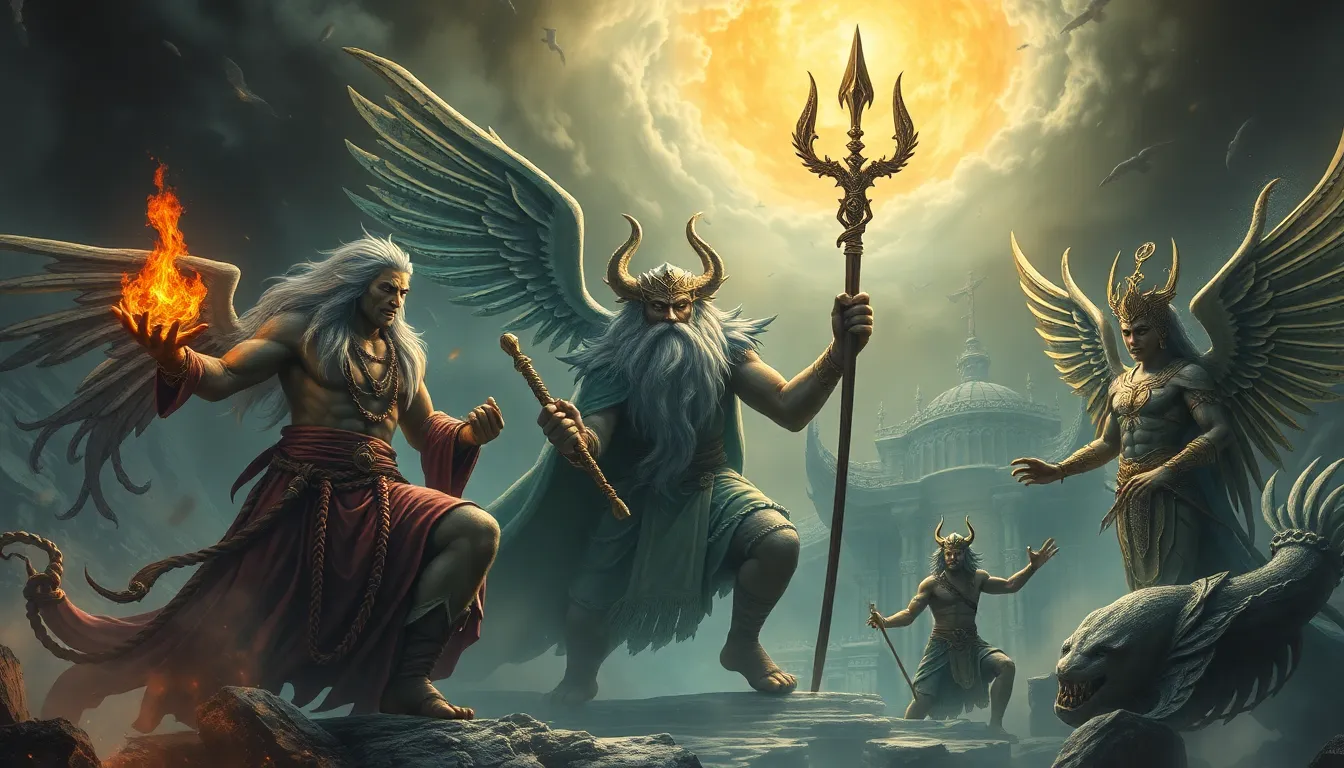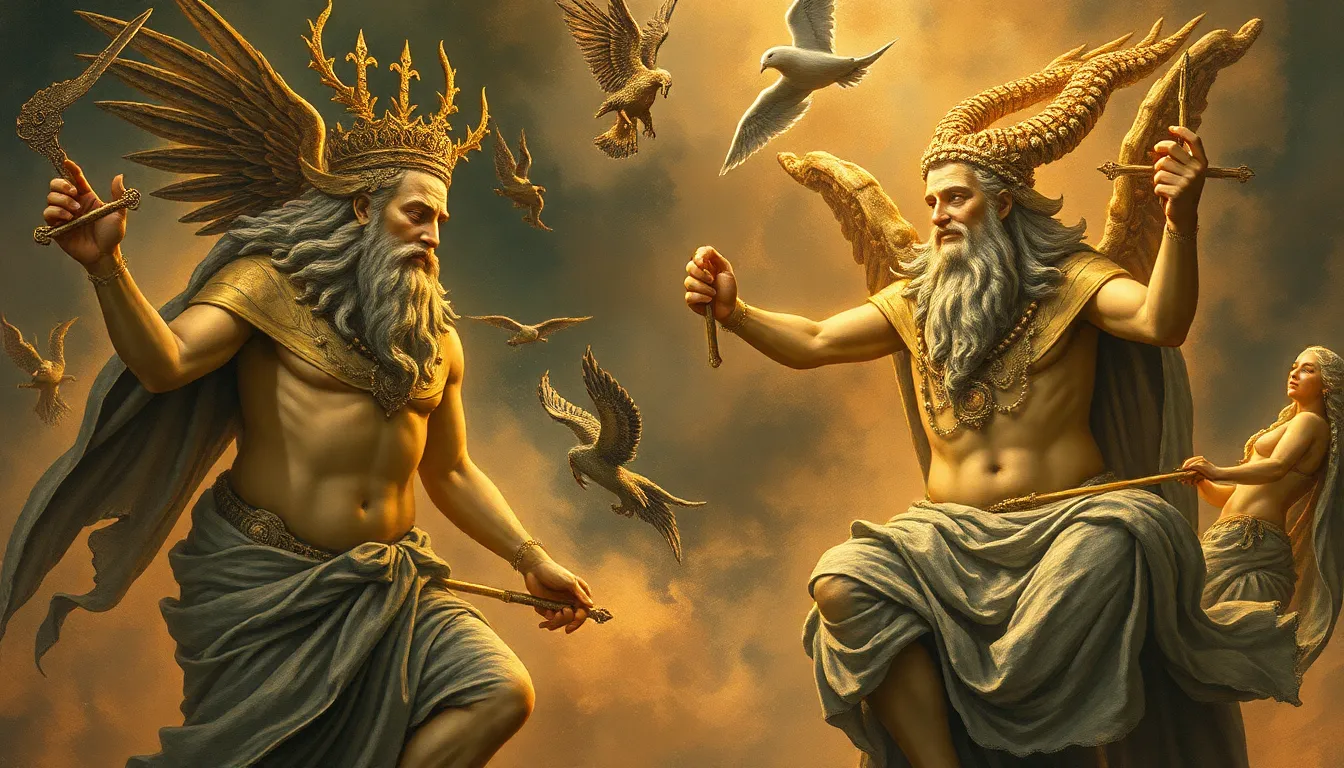The Most Powerful Ancient Deities and Their Legendary Quests
Introduction to Ancient Deities
Throughout history, ancient cultures have revered deities as powerful beings who governed various aspects of life and the universe. These deities played a crucial role in shaping human understanding of the natural world, morality, and existence itself. Myths and legends surrounding these gods and goddesses provided explanations for the mysteries of life, death, and everything in between, serving both as entertainment and as moral lessons for the communities that told them.
Criteria for Assessing Power Among Deities
In mythology, the concept of “power” can be multifaceted. It encompasses not only physical strength but also wisdom, influence, and the ability to affect the natural and human worlds. To assess the power of ancient deities, we can consider several factors:
- Worship: The number of followers and the fervor of their devotion can enhance a deity’s power.
- Mythology: The richness and complexity of a deity’s stories can elevate their status.
- Abilities: Supernatural powers, such as control over weather, life, and death, are significant indicators of a deity’s might.
Zeus: The Sky God of Olympus
Zeus, the chief deity of Greek mythology, symbolizes authority and the sky. Often depicted with a lightning bolt, he holds dominion over the heavens and is known for his numerous affairs and offspring. His attributes include justice, law, and order, making him a central figure in the pantheon.
One of Zeus’s legendary quests was the Titanomachy, a ten-year war against the Titans to establish supremacy over the cosmos. With the help of his siblings and other allies, Zeus ultimately triumphed, securing his rule over Olympus and the mortal realm.
Ra: The Sun God of Ancient Egypt
In ancient Egyptian mythology, Ra is the sun god, embodying creation, life, and growth. Revered as the king of the gods, Ra’s journey across the sky each day symbolizes the cycle of life and death. He was often depicted with a falcon head and a sun disk above it.
Ra’s legendary quest is his nightly journey through the Underworld, where he battles the serpent god Apophis, who represents chaos and destruction. This daily struggle signifies the eternal battle between order and chaos, reinforcing the importance of Ra in maintaining the balance of the universe.
Odin: The Allfather of Norse Mythology
Odin, known as the Allfather, is a central figure in Norse mythology, revered for his wisdom, poetry, and warfare. He is often depicted as a one-eyed old man, having sacrificed one eye for knowledge. Odin’s quest for wisdom is legendary, as he often sought out knowledge from various sources, including the Well of Mimir and the runes.
His quest for the runes involved hanging from Yggdrasil, the World Tree, for nine days, sacrificing himself to gain the knowledge of these powerful symbols. This quest highlights the value placed on wisdom and sacrifice in Norse culture.
Hercules: The Heroic Demi-God
Hercules, the son of Zeus and a mortal woman, is celebrated for his extraordinary strength and heroic deeds. His divine parentage grants him unique abilities, but he also faces numerous challenges that test his character and resolve.
Perhaps the most famous of Hercules’s quests are the Twelve Labors, a series of tasks he was ordered to complete as punishment and a means of redemption. These labors included slaying the Nemean Lion, capturing the Golden Hind, and retrieving the apples of the Hesperides, each symbolizing a struggle against formidable adversaries and the triumph of human spirit over adversity.
Kali: The Fierce Goddess of Destruction and Creation
Kali, a prominent figure in Hindu mythology, embodies the duality of destruction and creation. Often depicted with a fierce countenance and a necklace of skulls, she represents the power of life and death, as well as the cyclical nature of existence.
Kali’s legendary quests include her battle against demons that threaten cosmic balance. Her fierce battles symbolize the necessity of destruction in the process of creation, teaching the importance of balance in the universe.
Quetzalcoatl: The Feathered Serpent of Mesoamerica
Quetzalcoatl, known as the Feathered Serpent, is a significant deity in Mesoamerican cultures, particularly among the Aztecs. He represents wind, air, and learning and is often associated with the creation of humanity.
Among his legendary quests is the creation of humanity, where he descends into the Underworld to retrieve the bones of the previous humans. This quest highlights the themes of sacrifice, rebirth, and enlightenment in Mesoamerican mythology.
Comparison of Deity Quests Across Cultures
The legendary quests of these ancient deities reveal thematic similarities and differences across cultures. Common themes include:
- Struggle against Chaos: Many deities engage in battles that symbolize the struggle between order and chaos.
- Search for Knowledge: The quest for wisdom is a recurring motif, emphasizing its value in various cultures.
- Redemption and Sacrifice: Many heroes undergo trials that require sacrifice, which underscores the importance of moral integrity and personal growth.
The impact of these quests on cultural identity is profound, as they shape values, beliefs, and societal norms within their respective civilizations.
Conclusion: The Enduring Legacy of Ancient Deities
The powerful ancient deities and their legendary quests continue to resonate in modern culture, inspiring literature, art, and storytelling. These myths serve as a reflection of human experience, offering insights into our fears, aspirations, and moral dilemmas. The relevance of ancient myths persists in contemporary narratives, where themes of heroism, sacrifice, and the quest for understanding remain timeless.



